|
Geographically Gavi
is located in the southern Piedmont, practically on the border with
Liguria and so close to the Ligurian Apennines mountains. You can
consider more general term as belonging to so-called "foothill"
regions that include, as well as Piedmont and Valle d'Aosta,
Lombardy, Veneto, Trentino Alto Adige and Friuli Venezia Giulia.
In these regions we find a climate defined precisely type
pedemontano, characterized by rather rigid winters, hot summers and
spring and autumn fairly mild, more or less rainy. These are the
classical connotations of the "fruity-end", typical of those regions
that are above the 44th parallel, where they produce wines, albeit
with a few exceptions, not to a high alcohol content, but of complex
and strong fragrance.
|
|
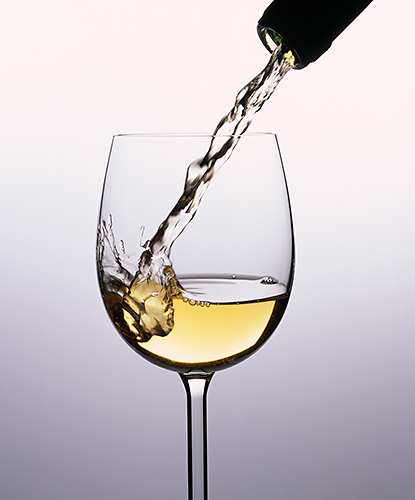   
Grappolo di Cortese |
|
Minimum aging required by law: not given
Tasting age: young
Serving temperature: 8-12 ° C
Color: straw yellow more or less pale
Bouquet: Fine, delicate, characteristic
Taste: Dry, pleasant fresh and harmonious taste
Pairing: Appetizers, cheese, fish. |
D.O.C. 1974 - D.O.C.G. since 1998
Production area: 11 municipalities of the Alexandrian
Name Size (Hectares): 1035
Average annual production (Tons): 95
Average annual production (hectares): 54000
Grapes: Cortese 100%
Minimum alcohol content: 10.5% Vol. |
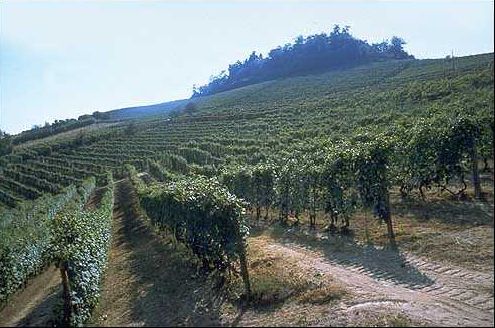
 |
|
With the recognition of D.O.C.G.,
Gavi has completed a journey that made him famous worldwide. And it's
produced more than 7 million bottles, even in the sparkling type. The
first rational plants in style Cortese, native vine already mentioned in
the seventeenth century, are due to the family of Cambiaso in the
estates of Centuriona Toledana in 1876. The goal was to produce white
wine for the Ligurian canteens, well storable due to the good standard
of acidity, and the example was soon followed by other large estates of
the best Genoese families starting by the Raggio.
The affirmation of Cortese di Gavi slowly leads to the abandonment of
the red grapes, with a specialization that, under the push and
qualitative promotion of large companies, the Scolca first, came in 1974
to Doc Gavi.
|
 |
There are about 150 large, medium and
small companies of the extraordinary wine committed to satisfy the
demand and that adhere to the Gavi Consortium. A market that is still
growing thanks to the high quality of the product, obtained by the
enthusiasm, passion and dedication of people to the cult of wine
dedicate their existence. They are the grandchildren and great
grandchildren of the pioneers of the noble art of making wine and
precious fruits Cortese, who perform this activity not only as a source
of income, but as a mission that goes much further and becomes an
artistic essence, bottled for export and make known to the world . |
|
Dalla vite alla degustazione |
|
The Sumerians, then the Egyptians and Greeks and then the Etruscans were the
first wine producers. The vine is an ancient plant that for millions of
years is present in the temperate zones of the planet, but only a few
thousand years it has begun to produce wine. Today Italy is the world's
first wine country and Europe holds 80% of world production.
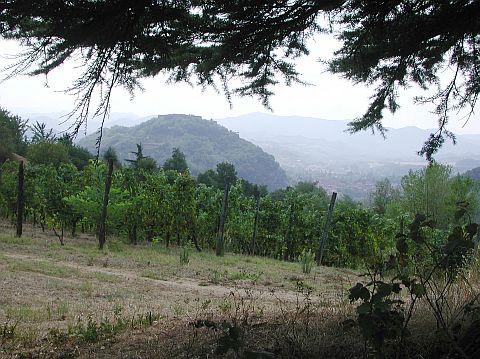
Among the various existing species the most
important is the vitis vinifera which owns almost all fruit varieties.
The vine can live and bear fruit only where there are four seasons. Already
in the Roman Empire there were about 140 types of wine that were circulating
in Rome which, because of the extension of the Empire, came from all over.
After the fall of the wine and vine suffered a serious regression and
resisted well only within the monasteries. Later thanks to Carlo Magno, a
great admirer, the wine underwent a new boom. The vine was cultivated
without major problems until about 200 years ago, America came pest which
almost led to the extinction European lives.
Those worthy of note and are very dangerous: The phylloxera, which attacks
the roots of the plant, downy mildew and powdery mildew, which attack the
leaves and bunches. For these reasons, today still fight these parasites
with copper-based products for the downy mildew and sulfur for
powdery mildew. This type of treatment today are much less "poisonous" than
in the past but effective and above all necessary. The interventions are
performed at a distance of about 10-12 days of each other. The first is made
to the appearance of the bunches so that they are immediately attacked by
mildew the last at least 45 days before the harvest, this to avoid that
traces of these products create problems to the alcoholic fermentation. For
the phylloxera problem was solved with the American root system utilization
that is immune. Today, European plants have all the basal supporting the
American-style roots, fruitful part instead is European and is applied by
means of a plug.
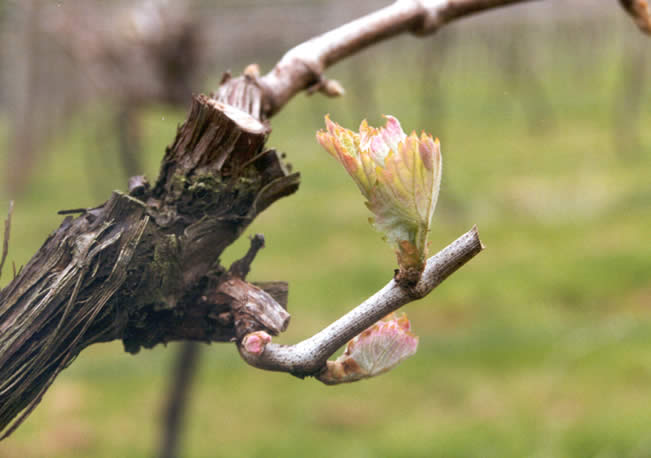
Every year the screw, when it is in
vegetative rest, must be pruned to obtain a good production both
qualitatively and quantitatively. From the type of pruning by the number of
plants per hectare and the type of vineyard it depends largely on the
quality and quantity of grapes. By pruning the branches are eliminated that
have already given the fruit, (if they were not cut the plant would grow out
of proportion and would be stripped of fruitful vegetation, the screw is a
relative of the liana plant). The pruning systems are of different
types depending on the climatic conditions and the type of vineyard. In
climates and more suited to the cultivation environments is sought, after
proper pruning, from the plant to have the maximum vegetative expansion. Do
not forget that there is more vegetation is more pronounced photosynthesis
and more sugar there will nell'acino (this is one of the reasons why you stà
definitely returning to vineyard equipment to "spin", since they guarantee
greater development and a leaf to greater sun exposure).
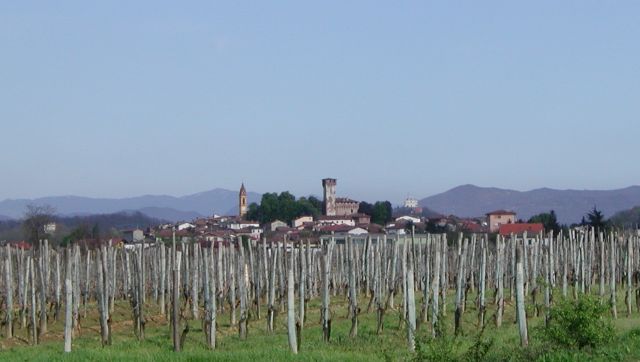
Scorcio di vigna
potata a San Cristoforo.
The branch
is pruned more or less short depending on the grape to be produced; more
gems will have the most branch grape will produce the screw and the lower
the quality. The best exposure that the screw can have is southeast for an
obvious reason of exposure to the sun, and in collina.Le seedlings (called
cuttings when they are purchased in the nursery before being planted), they
begin to produce around 3 ° or 4 years of age, reached the 6th year you get
an excellent production already.
The vine cycle will last up to 30 years after should weed out the
vineyard to rest the land a few years and replant. In spring, the screw
starts to grow and as a result there will be flowering followed by the
formation of small clusters (fruit). Before the summer will notice the
clusters already formed and green, while in summer there is the stage of 'ripening
where the grape by cell expansion softens and takes the color (yellow or red)
from the peel. The time of harvest depends very much on the wine to
be obtained. If you need to produce a sparkling collection will be slightly
in advance to have a higher amount of acid in grapes (for reasons that I'm
not to list), as they decrease the ripe grapes acids and grow sugars; to the
considered optimal balancing the grapes are picked. Looking to spoil the
grapes as little as possible, the grapes are taken to the cellar for
vinification. The cycle then it will start again.
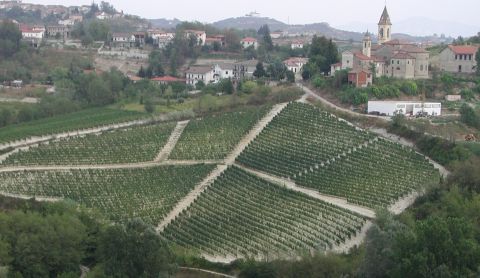
Caratteristica vigna sulle colline di Parodi Ligure.
The wine is the product of the alcoholic fermentation, in the
presence or in the absence of marc, which is operated by yeasts (present on
the grape skin). The nell'acino juice content is transformed from a liquid
alcohol sugary liquid through chemical reactions.
The wine contains about 600 substances (many of which are already present in
the wort). The wine differently from the must, is constituted by a
hydroalcoholic solution where the alcohol is present in the oscillating
amount, in general, between 80 and 140 milliliters of ethyl alcohol per
liter (8 ° and 14 ° alcohol) .The wort is made basically by water (70-80%),
glucose, fructose and contains a large number of substances including the
most important ones are tartaric acid, malic acid and citric acid. Such
acids determine the total acidity of the wine is usually comprised between 4
and 8 grams per litro.Vi pectins and tannins are then required to obtain the
full-bodied wines.
The vinification methods are basically two: with or without maceration.
With maceration means that the skins in the early days when the must
is not deleted begins to ferment (this technique is mainly used for red).
No maceration, said blank, when the skins are removed before
fermentation (technique used for white wines).
The fermentation and maceration gives the color to the wine as well as the
tannins and aromas.
If this happens for white wines, initially it would be more aromatic but
would pass in solution an excess of dye, an excess of tannins and especially
of oxidizable substances. It follows an easier oxidation of the wine, the
aromas would be lost in a short time and life organoleptic decrease.
 For
white wine, the scope of grapes in the cellar are crushed and destemmed
(separating the berries and stalks) are deleted; then it proceeds to the
pressing of the skins to obtain still wine (the rest will go to the
distillery). For
white wine, the scope of grapes in the cellar are crushed and destemmed
(separating the berries and stalks) are deleted; then it proceeds to the
pressing of the skins to obtain still wine (the rest will go to the
distillery).
With the addition of small amounts of sulfur dioxide (for disinfecting
vessels and disinfect the mass which sometimes could be slightly damaged)
the wort is fermented inside of vessels and at a controlled temperature of
about 18 ° -20 ° by means chillers (if the temperature exceeds 37 degrees
alcoholic fermentation cease). Immediately yeasts (single-celled organisms
present in the skins, but which often are added) give way to the alcoholic
fermentation takes place where the transformation of sugars into alcohol and
carbon dioxide, with heat emission. After a few days of fermentation sugars
are all transformed into alcohol and the process is completed (not having
more "fuel"), then it results in an already dry wine. Besides alcohol you
get a large number of substances.
After is racked into another vat, strictly impermeable to oxygen, they
eliminate the lees deposited on the bottom, then we proceed to the wine
filtration.
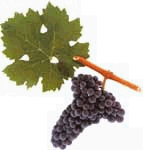 In
red wine instead the skins remain for a few days to dissolve the
substances including those coloranti.La temperature of the wort in the
fermentation of red grapes should be around 26 ° .I gases that develop bring
to the surface the skins that need to be pushed occasionally down to
oxygenate the yeast and stir the masses for a perfect result. Some tanks are
equipped with a barrier at a certain height to the skins so that they do not
rise beyond a certain level and remain always immersed in the must. In
red wine instead the skins remain for a few days to dissolve the
substances including those coloranti.La temperature of the wort in the
fermentation of red grapes should be around 26 ° .I gases that develop bring
to the surface the skins that need to be pushed occasionally down to
oxygenate the yeast and stir the masses for a perfect result. Some tanks are
equipped with a barrier at a certain height to the skins so that they do not
rise beyond a certain level and remain always immersed in the must.
Taking a hint to the other two methods of vinification we can say
that there is the vinification in rosé where the skins remain in
contact with the juice just to make rosé wine; then the carbonic
maceration, where the grapes are placed in a container for approximately
15 days together with carbon dioxide, is subsequently fermented for 2 or 3
days to a few days after the wine is ready for commercialization, this
technique is used to obtain the new wine.
The bottling of the wine is a practice that requires a lot of
attention especially for white over the use of modern machinery and
extremely expensive. The wine, needless to say, is bottled only after
performing the necessary filtering that make "clean" and free of bacteria,
which could alter the color and taste. This eliminates the risk of being in
front of the stores inside the bottle, that the only "fault" of being
unsightly, or an altered wine. The bottling, therefore, a seemingly simple
practice is of great importance to preserve intact all wine fragrances.
The opening of the bottle, for white and sparkling
wine must be made when the wine is consumed, while for the red, especially
if aged, better if uncorked in advance. This operation was necessary to
remove the musty smell from wine, bottled by time and to improve its
organoleptic characteristics. How early depends on the wine and its "old age",
in general it must be said that the more the wine is old needs more time,
but if we want to accelerate the oxygenation effect we put the wine in a
carafe a few minutes before serving.
Never put in a carafe white wine.
To enjoy the most of the quality of a wine, we must be attentive to
serving temperature. Serving whites at a low temperature while the red to a
higher, this is because at low temperatures enhances the astringent taste of
tannins, the wine then there would be "bitter").
More precisely, we can summarize:
The sparkling wine should be drunk at 8 ° degrees (approximately);
a young white wine 10th,
a sweet white 12th,
from barrique 14 °;
a rosé wine 11 °;
a young red wine to 16 °,
a robust red and body 18 °,
Long also aged 20 °.
Of course at the table we will use white wine for light courses and fish,
red wine for red meat, aged red wine for elabotate dishes and game. |
|
|
|
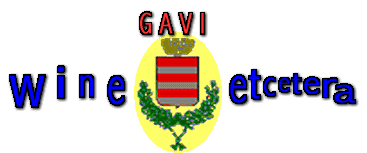
Uva e Vitigno
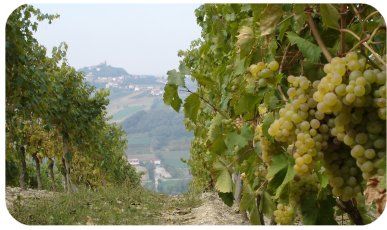
Viti e uva Cortese
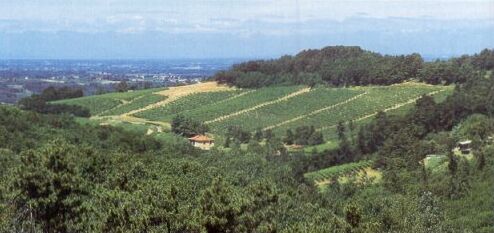
Vigne di Cortese

Germoglio
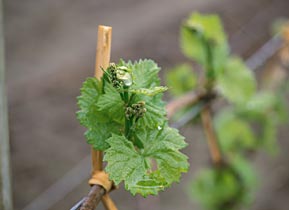
Germoglio alla fioritura
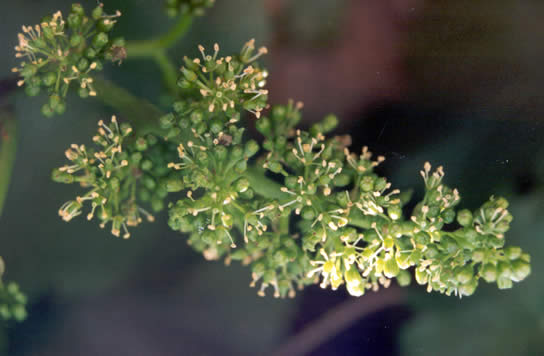
Grappolo in fioritura
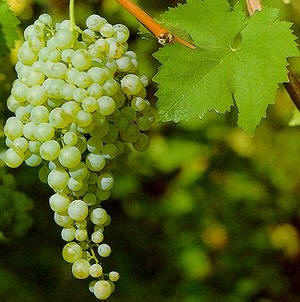
Grappolo ancora acerbo in maturazione.
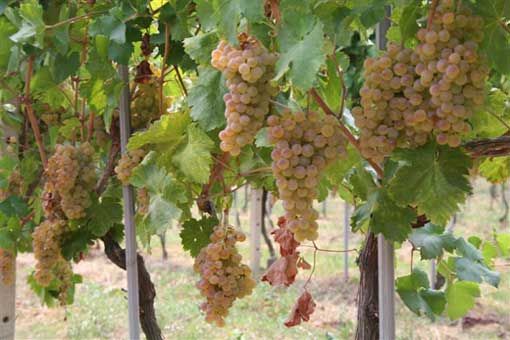
Tralci e grappoli maturi per la vendemmia
Chiunque volesse partecipare a rendere più esauriente
questa pagina può contattare o inviare direttamente il materiale
a: elidio@aruba.it
|
The Cortese grape variety
The first complete example of this variety is to Demaria and
Leardi; is historic duty to report fully the part about the Cortese
grape, together with the current text, which was drafted in 1960 by
professors Dalmasso, Ricci and Dell'Olio.
Since then, little has changed from the standpoint ampelographic while
numerous and extensive studies by the specialized sections of the
University of Turin and Piacenza have contributed to the genetic
improvement, the selection of planting material and the identification
of specific nutritional needs, so also have the optimal fertilization.
So in 1870, Demaria and Leardi describe the Cortese: "And the vine to
the most widely grown white grape in the province of Alessandria; there
is indigenous, long known time and grown in bulk and mixed with other
varieties. In addition to the strength and fecundity his, it makes fine
the goodness and the delicacy of its product, which certainly is such as
to recommend to the diligence and attention of winemakers.
It has a rustic and vigorous nature, very, hunting bears fruit in the
fourth year and the fifth, is very fertile and retains its fertility
because of other ordinary varieties. She loves sunny aspects and noon,
it is cultivated and thrives both in calcareous soils, both in clay and
mixed, as in tuffaceous soils, good resistance to winter frosts and
generally is little damaged by cryptogam.
Shoots: cinnamon
reddish color, streaked darker to robust nodes and lush, with median
internodes, prominent and large knots; Average marrow, woody tendrils.
They adhere firmly to the old man and stand up very well to winter
frosts.
Gemma: large, swollen, conical, lanugginosa to the top of scale
and at the base of dark brown color. It opens in mid season and the
flower very resistant to rain and mist and the spring winds and is not
damaged by melume.
Leaf: large, elongated, with five lobes of distinct ordinary, the
deep breasts upper and lower lobes that accavalcano to petiole .. E 'thick,
smooth to the upper page, glabra, but with the hairs on the underside.
It has bright green color which then also covers the yellowish
ferruginous spots, little know-lens ribbing, well below shows the rib,
the whitish underside, the median pezziolo, green with reddish tint.
Fruit: ripe on the commencement of the media. The ordinary bunch
is voluminous, conical in shape or that it approaches, very long, with
distinct racemoli and large, with the racemate herbaceous, pale green,
somewhat long, and sometimes with tendril protruding from the node. The
berries are sparse, but agglomerates and dense, round, with 16 mm. a
diameter of about, but somewhat unequal; They adhere little to the
racemate and have golden color with light green bottom and tawny hue on
the part exposed to sunlight. The harpoons is thin, transparent, very
little pruinose; The juicy flesh, slightly crunchy, with two or three
seeds. The grape has a simple, delicate, not until salt is healthier as
edible. It resists little to rain and moisture autumn, and is preserved
even after little detached from the plant. And full of wine, and it gets
a fruity wine, thin and dry, medium alcohol, storable. They can also
make fine sparkling wines. Sometimes, certain mix it with other grapes,
particularly with Malvasia and with Moscow-to. "Let us now ampelography
according Dalmasso, Ricci, Dell'Olio. The description has been made on a
clone Cortese located in the municipality of Gavi and the data were
controlled-ti with another clone cultivated in the municipality of
Melazzo (AL) and others of the province of Alessandra and Asti.
Bud: 10-20 cm . Apex: medium, lanugginoso, whitish
green with bronze hues and shades at the edges. Apex leaves: light
arachnoid pubescence, light yellowish green color with reddish hues,
with the apex of the teeth yellow / golden color. bud axis: curved.
Overall, the bud is light green color with bronzed reflections more
accentuated towards the tip ..
Bud flowering. Apex: foam, fluffy, green-white.
Apex leaves:
explained, cottony, with pubescence denser on the lower, green / light
whitish color. basal leaves: explained with tomento arachnoid thickest
at the bottom of page green color with yellow highlights / golden
superiorly, inferiorly clearer. Axis bud: a Pastoral.
Herbaceous branch: elliptical cross-section, with a side a bit 'with
angular spread tomento arachnoid, green in color with streaks vinous on
the side of the sun.
Tendrils: bifid or the Triffids, formula: 0/1/2/0/1/2/0
Inflorescence: length from 18 to 24 centimeters.
Flower: light green corolla, yellowish towards the apex, the normal
opening hood, stamens 5 to 8, rarely 4, morphological-mind normal
flowers, uniform, self-fertile.
Leaf: more than average size, pentagonal, five-lobed, closed
petiole sinus, with overlapped edges, upper lateral sinuses closed with
overlapping edges; breasts lower lyre-shaped, closed; glabra upper page
dark green, with pale green ribs (sometimes with some nuance to rosea
petiole point) lower page with tomento arachnoid very infrequently,
light green in color with the same color ribs; medium thickness flap, a
bit 'wavy; irregular teeth, convex on one side and concave on the other
hand, a broad-based, well pronounced.
Leafstalk:
Medium length and thickness than average with arachnoid tomentum very
rarely, light green in color with light winy shades.
autumn coloring of the leaves: green / yellow / gold.
Bunch to industrial maturity: more than average size, rather sparse,
conical / pyramidal, with one or two wings, length of about 20-25 cm .;
clearly visible peduncle, semi-woody (up to the first branching),
subscript The average length li, light green in color; labrum evident,
green; medium brush of light yellow / gold color.
Berry: medium or
slightly more than the mean ellipsoid, with circular cross-section; peel
of medium thickness, not very waxy, yellow / golden color from the sun,
green / yellowish in the shade; persistent and prominent navel; juicy
flesh of simple taste, characteristic, pleasant; separation from
dell'acino] ped
Woody shoot:
sturdy but a little fragile, with elliptical cross-section a little 'flattened;
smooth non-waxy; bark well adherent, of ashen gray dotted, internodes of
medium length (10-12 cm.), globose nodes; enough protruding conical gems;
labrum petiole off; marrow quite filling.
Location: Longitude: 3 ° 39 '- Latitude; 44 ° 41 - Altitude:
180/200 m. s.l.m .. - Orientation: West - Plot: hilly, with twenty / 5%
pendenza-
Soil: medium mixture mainly clayey - Rootstock: Berlandieri X Riparia
Teleki 5 BB -Age: 6 years - Training system; beacon of expansion in rows
- pruning Form; Guyot.
Vegetative phenomena:
Germination: medium (second half of April). Flowering: medium (mid-June).
Veraison: media (mid-August).
Aging: 2nd era (mid-September).
Fall leaf: normal (the fortnight of November).
Characteristics and cultural attitudes.
Vigor: remarkable.
Production: normally abundant and constant.
Position of the 1st bud-bearing: 1ma gem. Average number of
inflorescences per shoot: 2. femminelle of Fertility: occasional
negligible.
Resistance to diseases and other hardships: normal for the parasite
suffer relatively less than other varieties frosts but loves sunny
aspects: The grape does not stand much to the autumn rains. Behavior
with respect to multiplication by grafting: Particularly preferred good
"Berlandien Riparia X 420 A", "Kober 5 BB" and "Rupestri du Lot".
|

|
|

|
|













 For
white wine, the scope of grapes in the cellar are crushed and destemmed
(separating the berries and stalks) are deleted; then it proceeds to the
pressing of the skins to obtain still wine (the rest will go to the
distillery).
For
white wine, the scope of grapes in the cellar are crushed and destemmed
(separating the berries and stalks) are deleted; then it proceeds to the
pressing of the skins to obtain still wine (the rest will go to the
distillery). In
red wine instead the skins remain for a few days to dissolve the
substances including those coloranti.La temperature of the wort in the
fermentation of red grapes should be around 26 ° .I gases that develop bring
to the surface the skins that need to be pushed occasionally down to
oxygenate the yeast and stir the masses for a perfect result. Some tanks are
equipped with a barrier at a certain height to the skins so that they do not
rise beyond a certain level and remain always immersed in the must.
In
red wine instead the skins remain for a few days to dissolve the
substances including those coloranti.La temperature of the wort in the
fermentation of red grapes should be around 26 ° .I gases that develop bring
to the surface the skins that need to be pushed occasionally down to
oxygenate the yeast and stir the masses for a perfect result. Some tanks are
equipped with a barrier at a certain height to the skins so that they do not
rise beyond a certain level and remain always immersed in the must.





